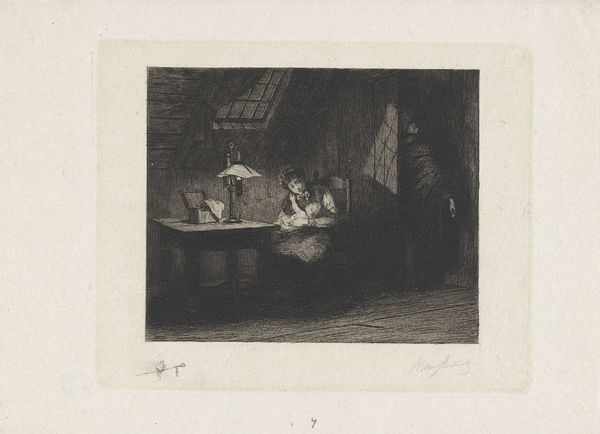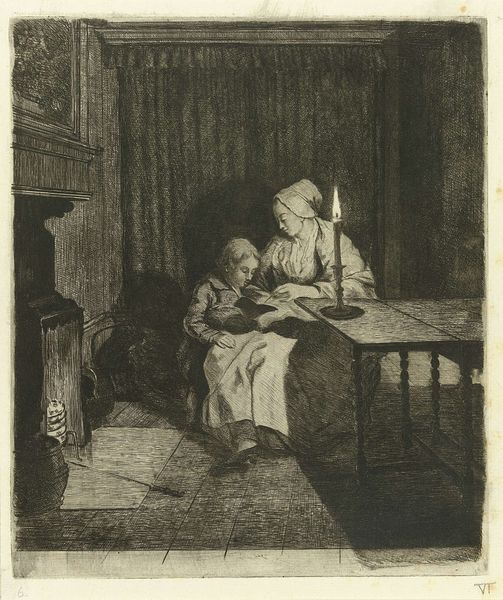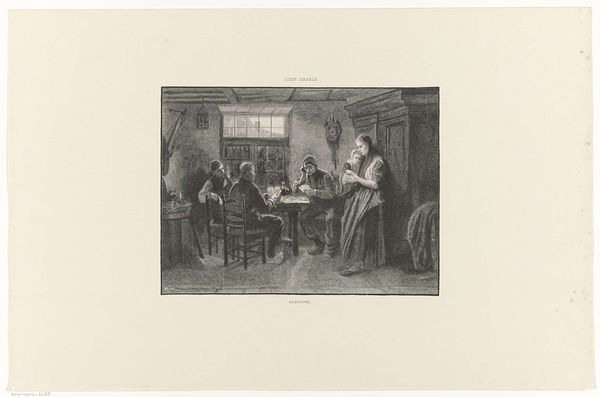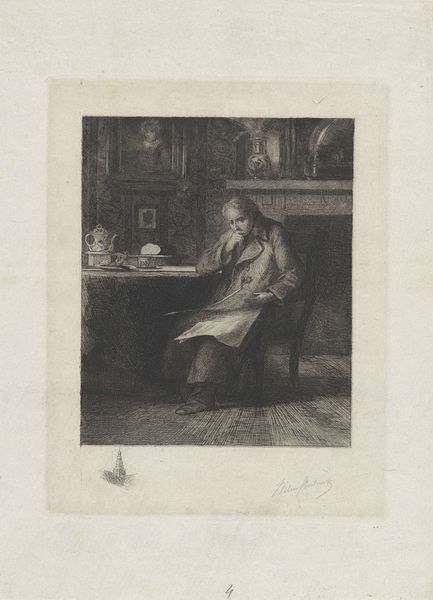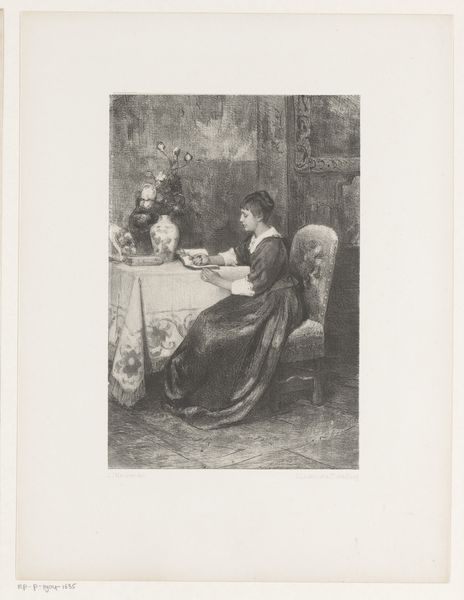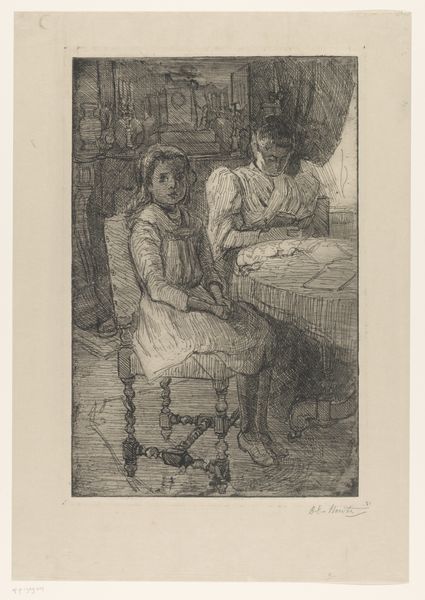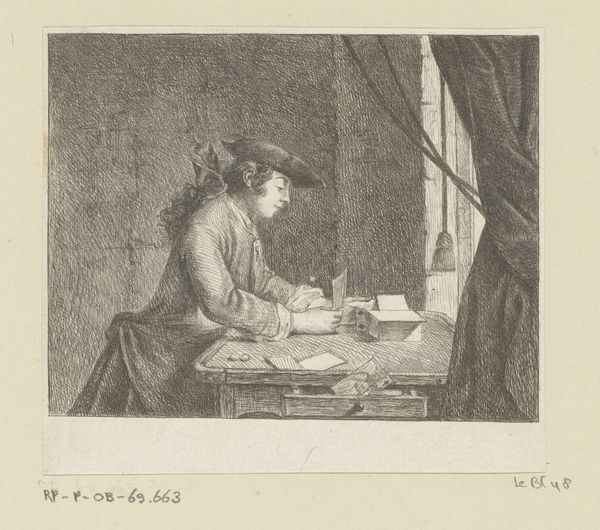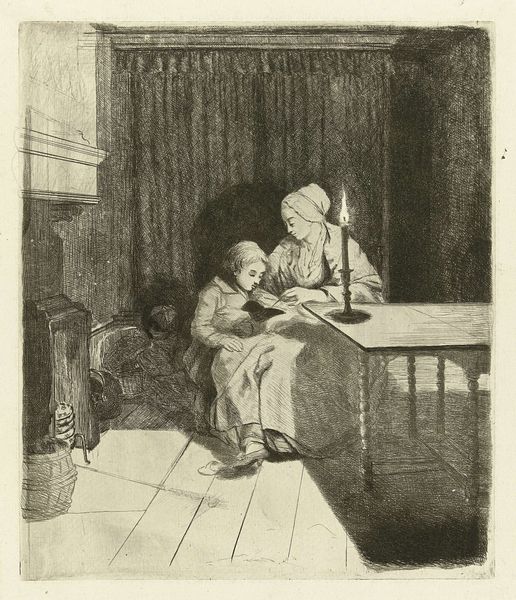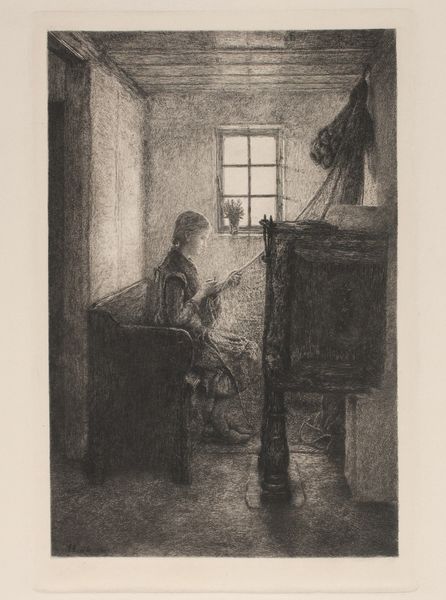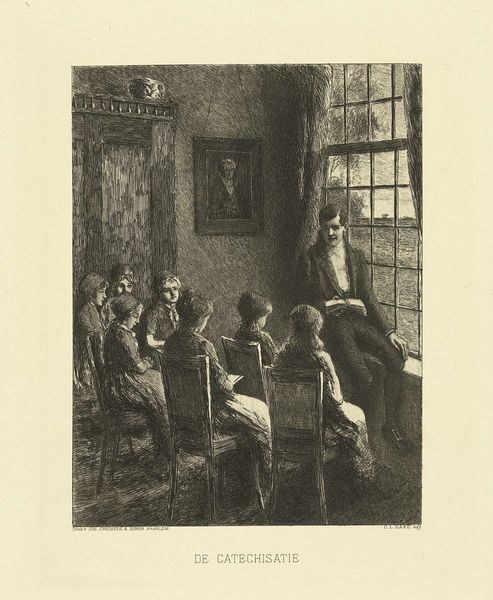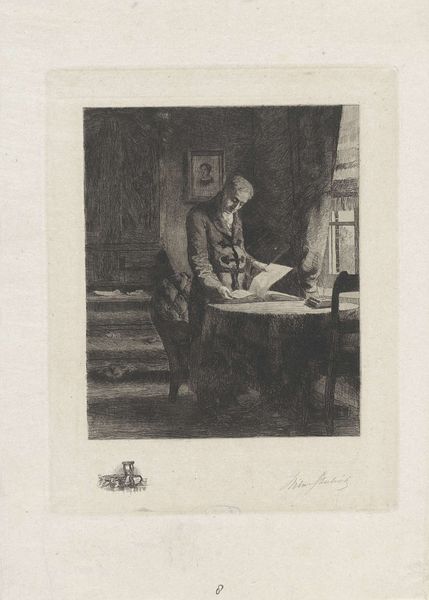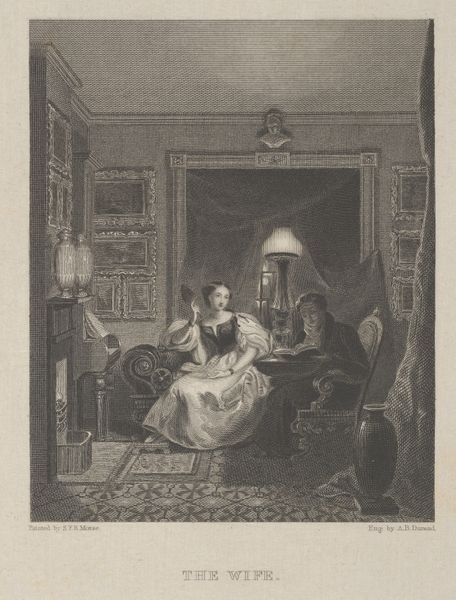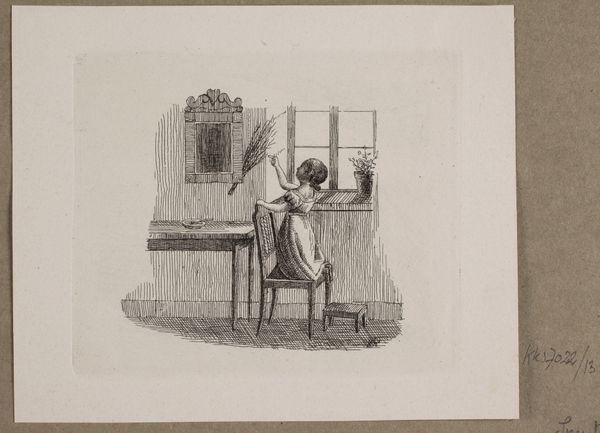
drawing, print, etching, paper, ink, pencil
#
portrait
#
pencil drawn
#
drawing
# print
#
etching
#
paper
#
ink
#
pencil
#
genre-painting
#
realism
Dimensions: height 234 mm, width 184 mm
Copyright: Rijks Museum: Open Domain
Editor: Here we have Willem Steelink’s "Moeder met twee kinderen aan tafel," or "Mother with two children at the table," created sometime between 1866 and 1886. It’s a rather somber scene depicted through etching, ink, and pencil on paper. There's an enclosed, almost claustrophobic feeling about it. What historical insights can you offer? Curator: The image certainly resonates with a sense of domesticity and perhaps a certain quiet resignation, common themes within 19th-century genre painting. The detailed interior, with its window, framed pictures, and shelf filled with plates, hints at the cultural value placed on the home as a private sphere, particularly for women. Do you see how the composition, with the mother centrally positioned and the children flanking her, reinforces this idea of the woman as the heart of the household? Editor: Yes, that’s very clear. But does the image challenge or reinforce existing social structures of the time? It seems a bit melancholy rather than celebratory. Curator: That’s a crucial point. Consider the burgeoning Realism movement. Artists were turning away from romanticized portrayals and instead depicting everyday life with unflinching honesty. This image, while seemingly benign, could be subtly critiquing the limitations placed upon women within the domestic sphere. The mother’s gaze seems almost weary, doesn’t it? The composition almost makes one consider the socio-economic constraints experienced by women of the period. Editor: That’s fascinating! I initially saw the scene as simply a glimpse into domestic life, but now I see how it also subtly reflects social dynamics. Curator: Exactly. And that’s the power of art. It invites us to consider not just what we see, but also the context within which it was created and received. It really shows us how powerful and influential Realism truly was in shifting society’s perspective on daily life. Editor: Thanks! It’s really opened my eyes to how even seemingly simple domestic scenes can be rich with social and political implications.
Comments
No comments
Be the first to comment and join the conversation on the ultimate creative platform.
